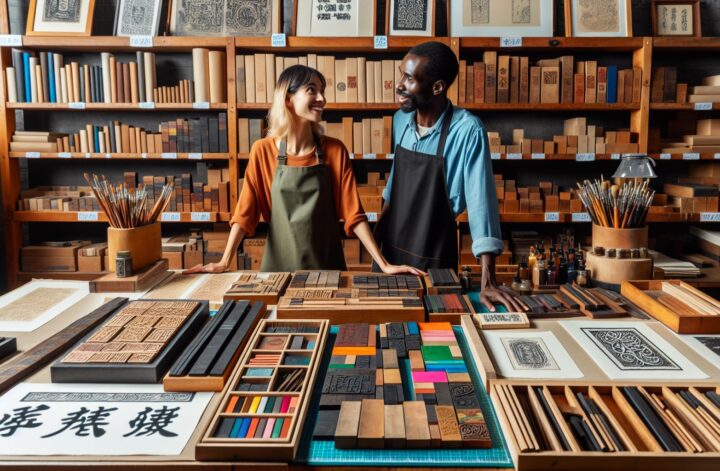Introduction:
Have you ever stopped to think about how printing materials have evolved over the centuries? From the early days of carving letters into stone tablets to the modern world of 3D printing, the materials used to reproduce text and images have come a long way. In this blog post, we will take a journey through time to explore the fascinating evolution of printing materials.
Body:
- The Ancient World:
The earliest form of printing can be traced back to ancient civilizations such as the Sumerians in Mesopotamia, who used stone tablets to engrave cuneiform script. This method allowed for the reproduction of text, but it was a laborious and time-consuming process. The tablets were heavy and not easy to distribute.
- The Invention of Paper:
One of the most significant advancements in printing materials came with the invention of paper. While the exact origins of paper are debated, it is widely believed that it was first developed in ancient China around the 2nd century BCE. Paper revolutionized the printing industry as it was lighter, easier to manufacture, and more affordable than stone or metal.
- Printing Press and Moveable Type:
The introduction of the printing press in the 15th century by Johannes Gutenberg was a pivotal moment in the history of printing. Gutenberg’s invention enabled the mass production of books, making them more accessible to the general public. This revolutionary machine required a new printing material: moveable type. Moveable type was typically made of metal, usually lead or tin, and allowed for easier typesetting and faster printing.
- The Rise of Industrialization:
With the advent of the Industrial Revolution in the 18th century, printing materials underwent another transformation. Instead of relying solely on metal type, printing presses began using wooden type, which was cheaper and easier to produce. Woodblock printing also became popular during this time, enabling the reproduction of illustrations and other images alongside text.
- The Age of Digital Printing:
The late 20th century brought about a new era of printing materials with the rise of digital printing. Laser printers and inkjet printers became commonplace, and new materials were developed to enhance the printing process. Paper quality improved, and new finishes and coatings were introduced to achieve different effects. Additionally, advancements in ink technology allowed for vibrant colors and higher resolution prints.
- 3D Printing and Filament Materials:
One of the most groundbreaking advancements in printing materials is arguably 3D printing. This technology allows for the creation of three-dimensional objects using various materials, known as filaments. The most common filament materials include:
-
ABS (Acrylonitrile Butadiene Styrene): This petroleum-based thermoplastic is strong, heat-resistant, and commonly used for printing household items, toys, and prototypes.
-
PLA (Polylactic Acid): Made from renewable resources such as cornstarch or sugarcane, PLA is biodegradable and environmentally friendly. It is often used for food containers, medical implants, and cosmetic packaging.
-
PETG (Polyethylene Terephthalate Glycol): PETG combines the strength and durability of ABS with the ease of printing associated with PLA. Its transparency and resistance to wear and tear make it suitable for applications like 3D printed prosthetics and mechanical parts.
-
Nylon: Known for its strength, durability, and flexibility, nylon filament is frequently used for functional parts like gears, bearings, and robotics applications.
Conclusion:
The evolution of printing materials has been a fascinating journey, from the ancient stone tablets to the wide array of filaments used in modern 3D printing. Each new development in materials has played a crucial role in shaping the printing industry, making printed materials more accessible, affordable, and versatile. It is exciting to imagine what new materials may emerge in the future, expanding the possibilities of what can be created with the power of print.

